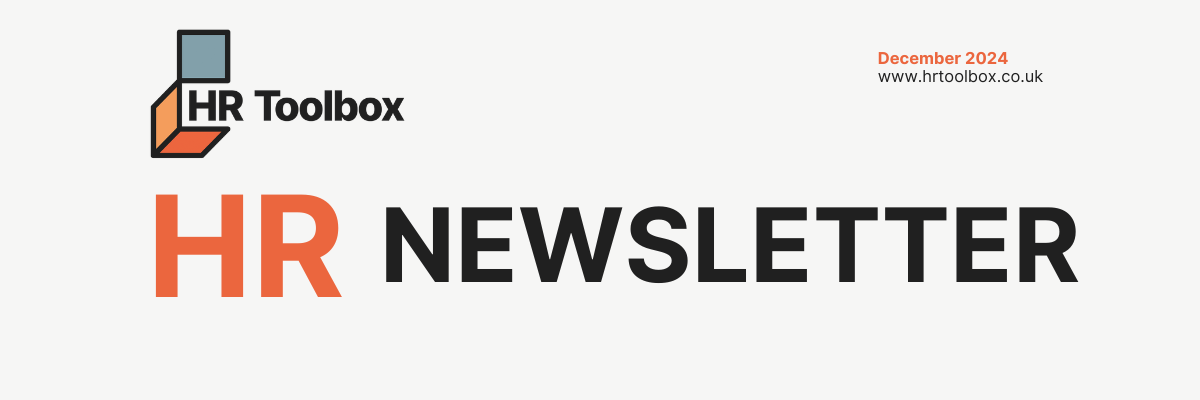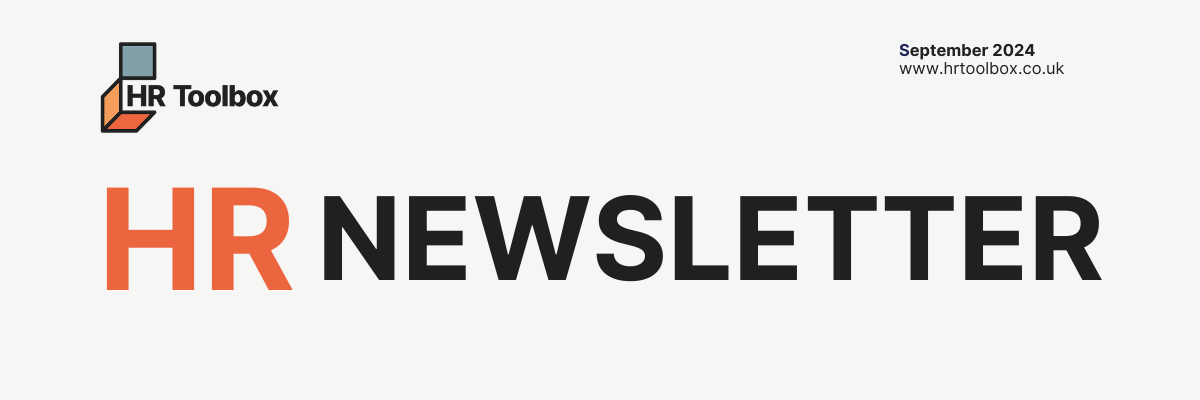The business owner’s guide to menopause in the workplace
Our helpful 10 step guide to menopause in the workplace...

*Please note that while we use the term ‘woman’ and ‘women’ in this guide, we also recognise that transgender, non-binary and intersex employees may experience menopause and require support and flexibility appropriate to their needs.
Menopause is a natural part of the ageing process and is experienced by most women*, usually between the ages of 45-55.
Symptoms can be both physical and psychological; they can vary significantly from person to person, and they can be extremely challenging to manage for several reasons.
Add work into the mix and things can become even tougher…
Navigating menopause symptoms at work can be tricky, as they can impact a woman’s comfort and performance. Plus, some women still feel embarrassed when talking to their colleagues or line managers about what they are experiencing.
Showing support and making even the smallest adaptations to someone’s working pattern or environment can make a world of difference.
Despite this, some employers are still not getting it right.
A recent Employment Tribunal case (Mrs M Lynskey v Direct Line Insurance) found that menopause symptoms can be considered a disability, and it may be possible to discriminate against an employee with menopause symptoms by refusing to make reasonable adjustments. This can have serious legal consequences.
In this guide, we’ll walk you through 10 essential steps to ensure your business creates an inclusive and supportive culture, your line managers are adequately trained and that you’re thinking both legally and commercially.
Now is the time to take menopause at work seriously…
Step 1 - Create a Menopause Policy
Having a menopause policy in place with clearly defined internal guidelines - and actively promoting it - is an excellent starting point. Consider including an overview of the menopause, the reasonable adjustments, support measures and flexible working options available, some practical guidance for colleagues and managers to support individuals experiencing menopause symptoms, and references to both internal and external support resources.
This not only meets your legal obligations but demonstrates your commitment to fostering an inclusive culture where the menopause is openly discussed and shows you care about your employees.
Step 2 - Understand Menopause Symptoms
Studies have shown that up to a third of women will experience severe menopausal symptoms that can impact their overall quality of life - and this can be debilitating. Symptoms can include hot flushes, anxiety, mood swings, headaches, reduced concentration, ‘brain fog’ and feeling tearful, to name just a few.
Having a solid grasp of the symptoms and the impact on a woman’s emotional, physical and mental health can be a hugely positive factor in showing empathy and support.
Step 3 - Be Aware of the Law
Menopause isn’t explicitly a protected characteristic under the law.
However, recent ET claims, along with guidance from the Equality and Human Rights Commission (EHRC) in February 2024, clarify that menopause symptoms could qualify as a disability if they have a long-term and substantial impact on a woman’s ability to carry out her normal day-to-day activities.
This would then place an automatic legal duty on an employer to make reasonable adjustments - and not doing so could amount to unlawful disability discrimination.
Be sure that your line managers are up to speed with the rights menopausal employees have under the Equality Act 2010. This protects them against discrimination - whether direct or indirect - on the grounds of protected characteristics such as age, gender, sex or disability.
Step 4 - Do all you can to prevent discrimination
As a business leader, you’re likely fully aware of the proactive steps you can take to prevent discrimination, but your senior leaders, line managers and colleagues must also be in the loop.
Some examples include:
- Discouraging unwanted comments, jokes, ‘banter’ or ridicule about a woman's menopause or perimenopause symptoms. Not only are they completely unacceptable in a modern workplace but could amount to harassment or sexual harassment.
- Advising managers to record menopause-related absences separately from other sickness absences. If later down the line you were to take disciplinary action due to menopause-related absence, this could potentially constitute unlawful discrimination, unless there's an objective justification for these actions.
Step 5 - Manage performance proactively
Sometimes menopausal symptoms can heavily impact a woman’s ability to concentrate or perform in their role to the best of their ability. This can be stressful, frightening and confidence-shattering. In some cases, they may consider leaving their job altogether.
You can stop things spiralling. If someone’s performance is suffering, approach conversations emphatically and positively to build trust, rather than resorting to formal processes. Try to understand and reduce any obstacles that could be a barrier to performance and consider any health-related issues.
Explore together the opportunities for adjustments or extra support that might be helpful. Even the smallest of changes, such as extra breaks or coaching, can make a huge difference.
Step 6 - Make Reasonable Adjustments
As an employer, you have a legal duty to assess and address workplace risks to ensure the health and safety of your employees.
This includes identifying and implementing reasonable adjustments for women who are experiencing menopausal symptoms and ensuring the symptoms themselves are not made worse by their job.
Remember, symptoms can be deeply personal, so having a regular, confidential chat with your employees will help explore what works best for them. It might be useful to involve an expert or occupational health, if you both agree.
Some examples of adaptations include temperature control measures like a desk fan, access to a cool, quiet room with a ‘do not disturb’ sign displayed, or a change in working hours to avoid the busy rush hour or ease the pain of a disrupted night’s sleep.
Step 7 - Create an open and inclusive culture
Menopause is a natural process and shouldn’t be a taboo subject. Yet, remarkably in 2024, there’s still a lack of understanding and support at work for employees going through the menopause, which can make things awkward and uncomfortable for everyone.
Creating a workplace culture that openly acknowledges and supports employees during the menopause should be a key part of your strategy. By fostering an environment where discussions about menopause are welcomed and supported, you can help reduce stigma, encourage early disclosure of symptoms and help facilitate access to the support available.
Step 8 - Educate and Inform
Alongside a menopause policy, it is crucial to ensure that your HR teams and line managers undergo professional training.
This can help equip them with the appropriate level of awareness, knowledge and understanding of the menopause, empower them to implement any required support frameworks and navigate employees to available support resources such as an EAP, counselling services or external websites and charities.
It can also minimise any legal risks.
Step 9- Build an internal support network
For some employees, opening up about the menopause at work can feel embarrassing, especially if their line manager is someone they’re not that comfortable discussing personal matters with.
Building a strong internal support network, made up of a powerhouse team of trained Mental Health First Aiders, HR professionals and Menopause Champions, can be a great network of support - and might also spearhead other internal support groups.
Step 10 - Think Commercially
According to Henpicked, an online community sharing advice and resources, having menopause support at work is not only beneficial for your employees - it’s great for your bottom line too.
Women over 50 are the fastest-growing workplace demographic and so now, more than ever, you should be doing all you can to attract, recruit and retain the best talent - and recognise the skills and expertise these employees add to your workforce.
Need help?
Menopause is a natural part of ageing, but it's not always easy - especially at work.
By focusing on the legal risks, doing all you can to prevent discrimination and fostering an open and inclusive culture that helps to retain the skills of your highly experienced talent, you’ll be supporting your employees through a hugely challenging phase in their lives.
That’s everything you need to know about menopause in the workplace! If you need any further help or advice, get in touch.
Get In Touch
We will get back to you as soon as possible
Please try again later

ABOUT US
HR Toolbox have over 20 years HR experience in the private & public sectors. Our customers love us as we give them the 1:1 HR support, tools, and software to help save them time, reduce risk, improve their employees experience and protect themselves.
SERVICES
Website built by - Mission Three60 LTD










